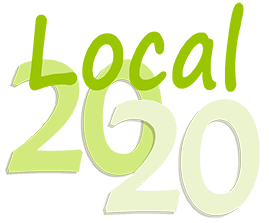In the latest Local 20/20 column in the Port Townsend Leader, Scott Walker describes how housing, parking, climate and community are all interrelated, and opportunities to address these issues simultaneously.
By Scott Walker
On a recent trip outside our idyllic community bubble, I saw our dystopian future: an asphalt ocean surrounding a sprawl of chain stores and homes, all connected by 5-lane, stoplight-studded roads filled with cars, trucks, and more cars.
The seas of asphalt are the result of LITERALLY prioritizing cars instead of people. It has turned the American Dream into a social and environmental nightmare. Cars have taken over public space, fostered urban decay while their Green House Gas (GHG) emissions are shredding the planet’s life support system. Roughly 70% of our local GHG emissions are from transportation and, though transitioning to EV’s will reduce those emissions, it will not address the multitude of other car caused problems. One of those problems is the requirement for housing cars instead of people.
We want more bedrooms, homes, playgrounds, gardens and green spaces, all of which make for a more livable community. But code required parking takes away space for those uses while significantly increasing the cost of housing whether or not one has a car, or two as the code assumes.
To top it all off, consider how adequate and preferably free parking at each destination of your trip affects your choice to drive. Code requirements create an excess of parking, leading to its being cost-free for the driver and thus encouraging driving while making walking, biking, and transit use less safe, appealing, and more difficult. Free parking has a very high cost.
Nationwide, parking requirements have created an average of 8 spaces for every car. In some urban areas, parking consumes up to 1/3 the land area. Here, we can be proud of our beautiful Comprehensive Plan that envisioned a near-utopian community. But sadly, it is precluded by the poison pill of parking policy. Fortunately, many years ago the Historic District avoided that bullet when the city exempted it from parking requirements. But even as the district is loved for its pre-car development and minimal driveway interruptions to parking areas, it is not compliant with current code and therefore cannot be replicated elsewhere. So, outside the Historic District, the parking code is making our community less inviting, vital, and green.
Currently, the code requires a “minimum” amount of parking spaces for all land uses. But there is a quick and easy fix. Exchange the word “minimum” in the parking code and insert the word “maximum”. The code would then allow the market to determine parking needs while we build the community we envisioned in our Comprehensive Plan.
As we know, every crisis is also an opportunity. The climate crisis offers us an opportunity to address housing issues and also decrease our GHG emissions while improving community health with more walking and biking and transit. Many communities are doing just that, with altered parking policies and SIMULTANEOUS investments in walking, biking and transit.
Urban areas beyond our bubble aren’t pretty. The good news is that parking management is on the city’s current draft work plan for 2023. We may yet avoid paving paradise and instead build our utopia.
Bio: Scott Walker is a member of Transportation Lab, (TLab) a Local 20/20 action group dedicated to getting us on our feet, bicycles, and transit before our beloved Port Townsend bubble is run over by cars.








